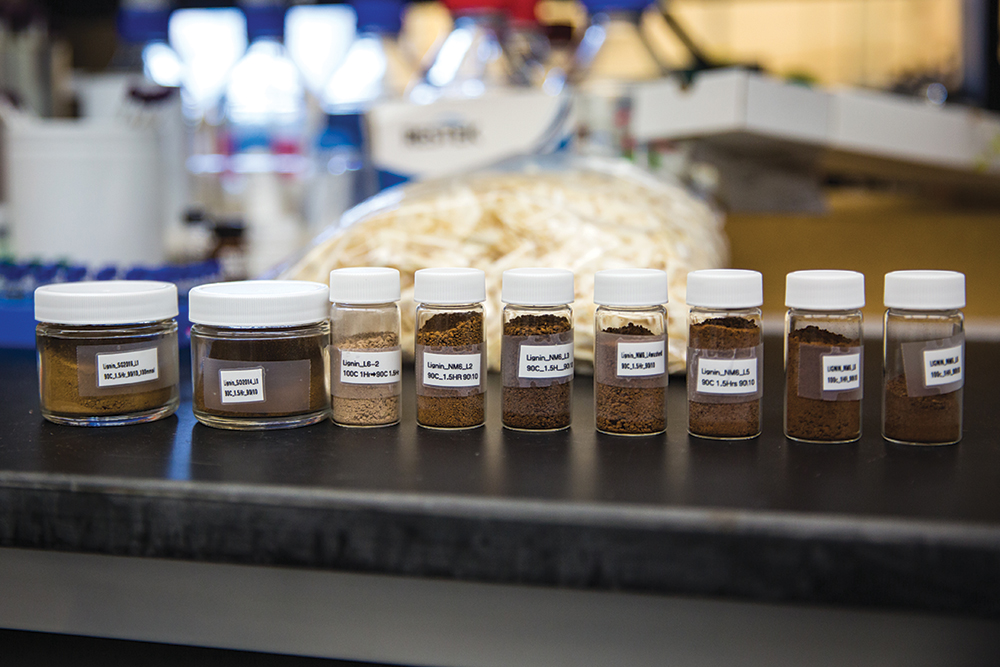A Green Pain Reliever
UW patents a way of making Tylenol’s active ingredient from plant material.

The new method of synthesizing acetaminophen offers a renewable alternative to the current manufacturing process, which uses chemicals derived from coal tar. Chelsea Mamott
With a new method to synthesize a popular pain-relieving medication from plants rather than fossil fuels, researchers at the UW’s Great Lakes Bioenergy Research Center (GLBRC) have found a way to relieve two headaches at once.
A team led by John Ralph PhD’82, a professor of biochemistry at UW–Madison, has been awarded a patent for a method to synthesize acetaminophen — the active ingredient in Tylenol — from a natural compound derived from plant material. The approach offers a renewable alternative to the current manufacturing process, which uses chemicals derived from coal tar. It also creates a useful product from an abundant but difficult-to-manage component of plant cell walls called lignin.
“Lignin is an extremely complex, messy polymer. No two molecules in a plant are exactly the same,” Ralph says. “It’s very effective for providing structure and defense for the plant, but it’s challenging for us to break down into usable materials.”
The lignin in bioenergy crops, such as poplar, can create problems for bioenergy researchers due to its recalcitrant tendencies, Ralph says. Once plant sugars are used to produce biofuels, the lignin that remains is typically burned for energy.
The patent application, filed by the Wisconsin Alumni Research Foundation, describes a way to convert a molecule found on lignin into acetaminophen. It was awarded last spring to Ralph, UW researcher Steven Karlen, and Justin Mobley, a former GLBRC postdoctoral fellow who is now at the University of Kentucky.
In addition to charting a way to synthesize acetaminophen from a renewable, sustainable source material, the newly patented process improves the bottom line for biorefining — that is, producing fuels and other industrial materials from plants.
“Making money off any side product helps drive the economics of the biorefinery,” Ralph explains. “In many cases, these products are even more valuable than the fuel.”
Published in the Winter 2019 issue



Comments
No comments posted yet.